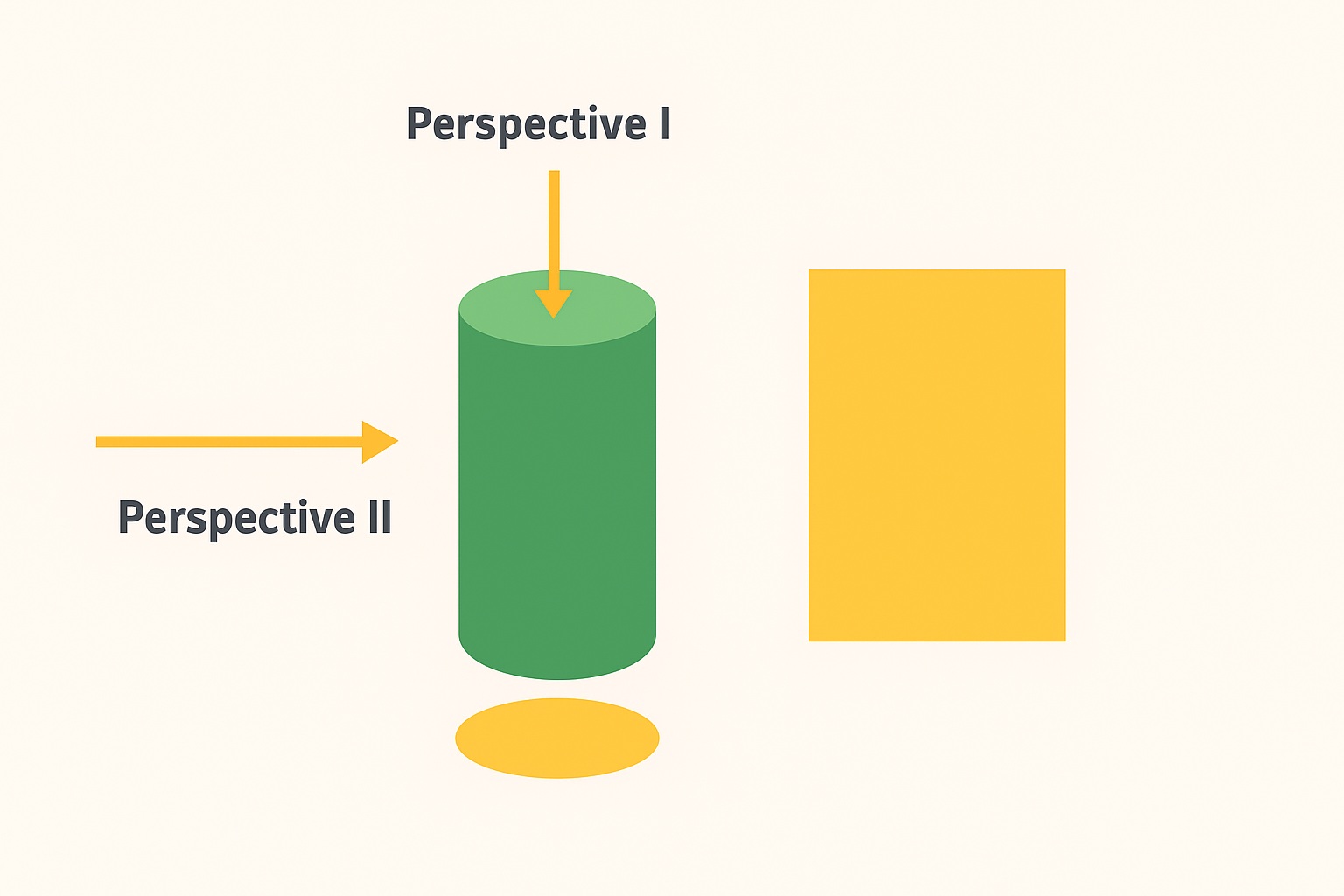Perspective

Perception =
Perspective of the Senses
Our perception is always perspectival – it arises through our senses and is shaped by our inner world. Psychologically as well as philosophically, the following holds true: we have no direct access to “objective” reality, but only to fragments of it. Each sense provides its own perspective:
- The eye perceives light and color – but not sounds or smells
- The ear hears sounds, but it does not “see” what causes them
- The sense of touch only provides information through direct contact – it tells us nothing about things that are farther away
Each sense therefore opens up a specific view of reality. We then combine these individual perspectives into a larger picture. Perception is thus always a construction made from partial views – what is seen, heard, felt, tasted, and smelled. We can experience the fullness of life, the indivisible whole, when we consciously try to perceive life with all our senses.
Even within our senses, perception is not uniform. What we see, hear, taste, smell, or feel is shaped by experiences, memories, moods, expectations, and attention.
An example: Two people walk through the same forest
- For one, it feels peaceful
- For the other, it feels threatening
Or take music, for example:
- For one, a song sounds beautiful and uplifting
- For the other, it sounds cheesy and annoying
These examples show: Even when we perceive the same stimulus – the same forest, the same song – we interpret it differently. Our individual conditioning colors and shapes every perception. This inner perspective changes the meaning and forms our reality. As a result, it is no longer objective, but it is unique. What matters, therefore, is not just what we experience, but how we experience it. Ultimately, we do not see the world as it is – but as we are.
Media additionally intervene in our sensory experience. They can narrow our perspectives and override our own experiences – for example, by presenting only certain aspects, opinions, or viewpoints, by imposing predetermined angles, or by deliberately omitting information. Even the screen itself is just a fragment. In this way, media change not only what we perceive, but also how we interpret the world.
Even so-called “facts” do not appear completely neutral. They are filtered through expectations, emotions, attitudes, prior knowledge, or specific intentions – and they can also be manipulated, selectively presented, or framed in a way that makes it difficult for us to distinguish what is real and what is not. This is where science comes in: it works precisely because it constantly questions itself – and it is through this process that it advances. Doubt is its engine, not its enemy – Galileo Galilei would approve.
Perspective and perception are therefore inseparably linked:
- Each sense is a perspective
- Every perception is subjective
- Media artificially alter our perspectives

What does an elephant look like?
The story of the six blind men and the elephant is an ancient wisdom tale from India. It illustrates how different perspectives can lead to contradictory statements – even though each individual has perceived a part of the truth.
An elephant is brought into a dark room, and six blind men are asked to touch and describe it. Each one feels a different part of the body:
- The first one touches the leg: “The elephant is like a tree trunk.”
- The second one feels the trunk: “No, it is like a snake.”
- The third one feels the tusk: “Wrong, it is like a spear.”
- The fourth one touches the ear: “It resembles a fan.”
- The fifth one touches the side: “It is like a wall.”
- The sixth one holds the tail: “Nonsense, it is like a rope.”
All the descriptions are correct – but each is only a fragment of reality. Yet the men argue because each believes they know the whole truth. Only when all perspectives are combined does the complete picture of the elephant emerge.
The story illustrates a fundamental principle of human perception:
People do not see the same reality.
Why?
Because each person draws on a different base of experiences. Between the inner worlds of two people, there is often a gap – shaped by what one has experienced and learned, and what the other has not. We live in subjective, personal realities and often take for granted that others share our frame of reality. But they do not. We all live in different, individual, independent realities. Other people are therefore not “unreasonable”, “stupid”, or “blind” – they are simply viewing reality from a different perspective.
Added to this is cognitive dissonance: this inner state of tension arises when beliefs, knowledge, and behavior do not align. Instinctively, we try to reduce this tension – either through justification, selective perception, or by adjusting our beliefs. This change can occur openly, by consciously taking in new information and adapting our opinion. But it can also happen defensively, by unconsciously interpreting information to fit our existing views – or by outright rejecting it, because we do not want, or are reluctant, to hear anything that challenges our beliefs.
The lesson of the story
- Every person experiences only a part of reality
- Only the combination of different perspectives leads to a greater truth
- Conflicts arise when we only insist on our own perspective
- Wisdom means integrating other perspectives instead of fighting them
Truth is often greater than what we can perceive on our own.
When we understand this, it opens the space for understanding, dialogue, and genuine insight.




Leave a Reply